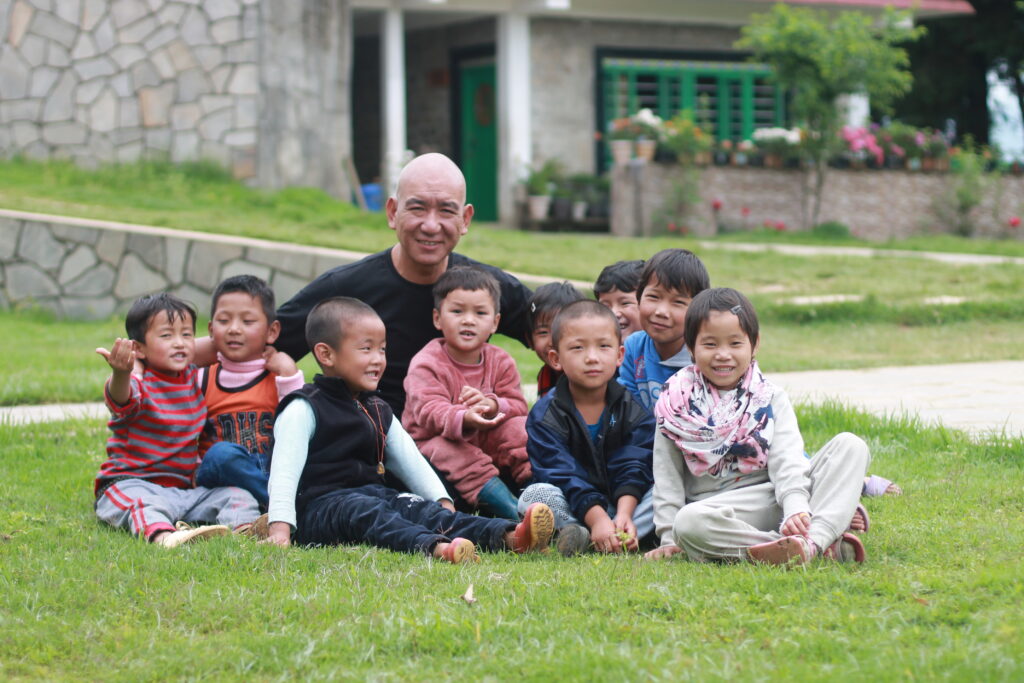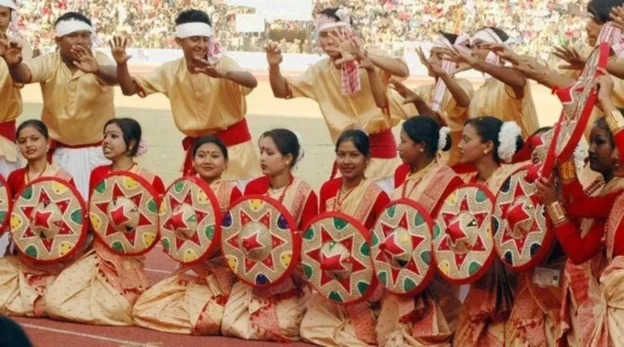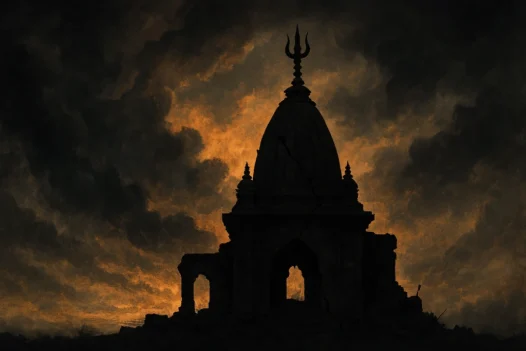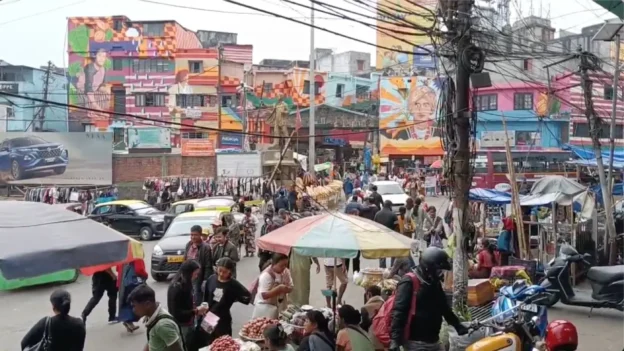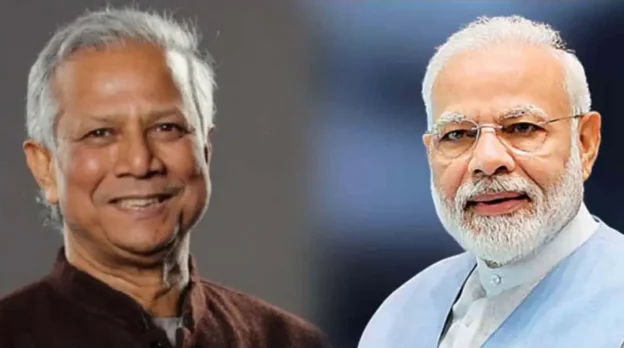There are only a handful of experiences in everyone’s life that gets etched in one’s heart for a lifetime. My visit to Jhamtse Gatsal qualifies as one such experience; special, unforgettable and forever a part of me.
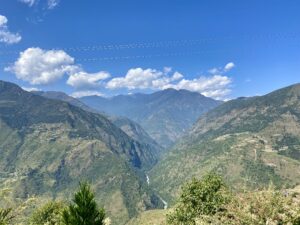
‘Jhamtse Gatsal’ literally, translates to ‘garden of love and compassion’. Standing true to its name, its a place where young souls are nurtured with love and tended to with compassion, much like seeds sown in a garden. It was opened in the year 2006, with 35 kids under its care and today it is home to 128 children.
The physical location of Jhamtse Gatsal is as enchanting as the philosophical essence behind its inception. About 50 Kms away from the noise and bustle of the district headquarter Tawang, it is located in the remote and picturesque Lumla sub-division. Built atop a hill, it is surrounded by majestic mountains that are lush green during summers and sparkling white during the winter. It overlooks the mystic Tawang Chu river meandering through the foothills and demarcating the international border with Bhutan to its left.
Far from the madding crowd and nestled in nature’s bounty, it is not an overstatement to say that the place satiates the yearnings and heals the maladies of the soul. Jhamtse Gatsal is a world in itself; complete and self-sustaining. The story of how it came into existence is nothing short of awe-inspiring.
Jhamtse Gatsal is the brainchild of Mr. Lobsang Phuntsok, the former monk who left his fairly comfortable and thriving life in America and came back to his birthplace Tawang, with the purpose of giving back to the place and its people, all that was in his capacity. He is fondly addressed as Gen-la (‘Gen’ is a Tibetan term for an honoured teacher and La is added to indicate respect. Together, Gen-la translates to ‘honourable teacher’), by everyone in Jhamtse Gatsal community and beyond it, by others in Tawang. Gen-la’s vision, grit and conviction to transform lives and mould them, comes from the childhood that he lived.
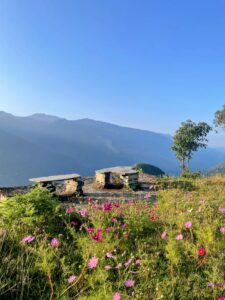
Born to an unwed mother, he was looked upon as “an uninvited guest in the universe”. Even though the pain and embarrassment his birth brought to his mother and family is not the best of memories to go back to, he does not shy away from embracing and sharing his story. He rather acknowledges its instrumentality in shaping the person he is today. He recalls being a difficult child; often detested by the villagers for his notorieties. His loving grandparents saw no way out to mend his ways and finally at the age of 7, with the earnest hope for his life to take a better turn, he was sent away to a Buddhist monastery down south of the country to live a monk’s life. Notwithstanding, he recalls his young self continuing with his old ways in the monastery. But eventually, the faith, patience and compassion showed by his Gurus set him on the path of self-transformation. Reaffirming the fact that behind different facades, lies the inherent human goodness in each one of us.

The children fostered by Gen Lobsang La at Jhamtse Gatsal share stories similar to his own; where the mere accident of birth in a certain family or circumstance left them in a position of pain or disadvantage. His mission is to give these children a fair chance at life and more importantly, guide them to transform themselves into better humans capable of being agents of change wherever they go, in making this world a better place to live in. He shares that, to love, care, provide for, and see the children happy is like time travelling back to his formative years; giving him a chance to relive his childhood through them and experience everything he missed out on. It is true indeed that the love we give is the love we keep. The only way to retain love is to give it away.
In his 50s now, Gen Lobsang la has the exuberance of youth and his passion is evident in the joy with which he shares about his mission and the future plans he has for Jhamtse Gatsal. He is backed by a team of dedicated teaching and non-teaching staff, who are not only competent in their respective specialities but also share some common core values. Benign in their approach, they are professional with a human touch and value, laying the base of a healthy work environment.

Jhamtse Gatsal campus is at present, broadly dividend into three main sections – the children’s residential complex, academic block and an area designated for building a residential colony in the near future. Together, it makes up the Jhamtse Gatsal Community. Every aspect of Jhamtse Gatsal in well thought-out and holds meaning. The children’s residential complex is sectioned into four parts, each one of them a ‘Khemsang’, meaning ‘a family house’. The four khemsang have been named – Panggyen, Ganghla, Serchen and Gurkum after rare plants with medicinal properties and healing capabilities. The thought behind this is to bespeak and symbolise self- healing and then, the the ability to heal others. Because it is righty said “hurt people hurt people. And healed people heal others. Free spirits free others, enlightened people enlighten others”.
Each khemsang and its children are looked after and taken care by one ‘Ama-la’ (‘Ama’ means mother, ‘La’ is added to express respect. ‘Amala’ translates to respected/beloved mother). The four Ama-La(s) manage the four Khemsang(s) just like a mother does in a family. Along with the family like set-up with a mother figure, the older children are also taught to look after and care for the younger ones just like siblings do in a family.
It leaves no room for bullying or domination and instead, develops qualities of affection, sense of responsibility and mutual love between children of different age groups. These are just a few subtle and manifest ways in which the system devised at Jhamtse Gatsal empowers children and nudges them to a better path.
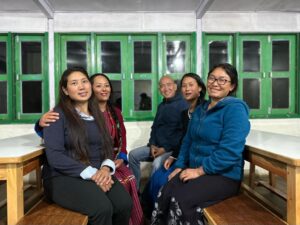
Keeping the ideals of a family, the mess at Jhamtse Gatsal has no fixed menu that repeats week after week. The Ama-La incharge decides what is to be fed. From ‘Thentuk’ (Hand-pulled noodle soup with mixed vegetables) to healthy curries, every meal is cooked with love and dedication.
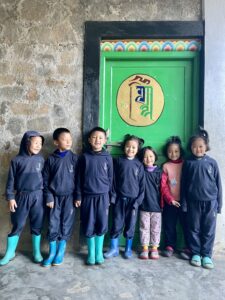
One of the inspiring routine event I was privileged to take part in, was the weekly one meal fast (Wednesday dinner). It is not compulsory for guests or even for others in the community to participate, it is a completely voluntary choice. Dinner is still served for anyone who decides or feels the need to eat, along with the younger lot who are strictly exempted from participating.
The apportioned ration for those days are saved and donated to the needy in the villages around. In explaining the idea behind this observance of fast, Gen-La re-defined the notion of charity and sacrifice for me. He says, the right way to gauge our dedication and love for fellow human beings is to see what we can forgo for someone else. He says, to be generous, donate, help only when there is an overflowing abundance, or give away that which we don’t want/wish to discard, hardly captures the spirit of charity or qualifies as one.
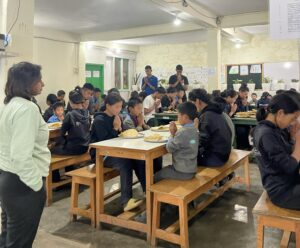
This made me rethink the idea of donating clothes we don’t want, the leftover food on our plate that we give away, as an act of kindness. Sure, something is better than nothing and to feed an empty stomach is better than dumping it in a thrash bin. But it made me wonder that perhaps, cutting out from our own portion for someone else is to treat the other person with respect, as equal sentient beings to share and care for, and not subjects of our kindness born out of a condescending privilege.
Along with the standard curriculum for each class, children are engaged in a myriad of extra- curricular activities, skill training and other creative projects. The goal is to ensure an all-round development encompassing emotional, spiritual, mental and physical health.
Each child is counselled, encouraged and helped to polish their unique strengths by abled teachers and Gen-La, together. Instead of trying to fit everyone in a specific predesigned box, each child is allowed to bloom on its own pace and shine in their own unique domains. Teaching the science and art of sustainable living is a major focus and the base on which the edifice of Jhamtse Gatsal Community is built.
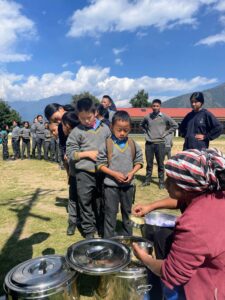
Children are exposed to lessons and activities that arm them to live scientifically and in harmony with nature, through fun and interesting engagements. From plastic recycling, waste management, vermicomposting to art and craft, the children at Jhamtse Gatsal are taught and trained by teachers, Ama-la(s) and enthusiastic allies from across the world. Other than professional and academic lessons, it is ensured that children learn basic life skills – cooking, cleaning and self-care across genders.
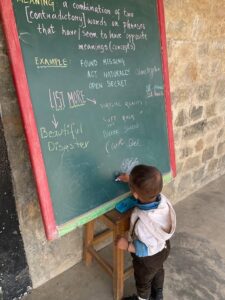
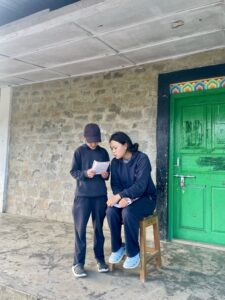
Jhamtse Gatsal is a beacon of hope for the world we live in today. In a world of information overload and easy access to social media, it is sometimes dispiriting to witness the tragic events happening across the world.
At such a time, Jhamtse Gatsal is a place that felt refreshing and reaffirmed my faith in a shared brotherhood of humanity with the promise of a better, kinder and harmonious world. In my assignment to write for The Borderlens, I feel fortunate to have discovered my Shangri-La at Jhamtse Gatsal Children’s Community; a place that felt like a remotely hidden, beautiful utopia.
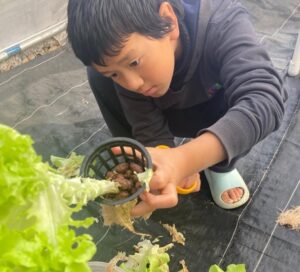
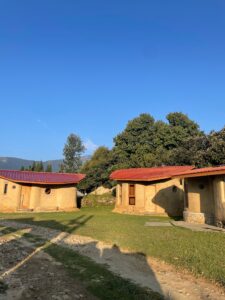
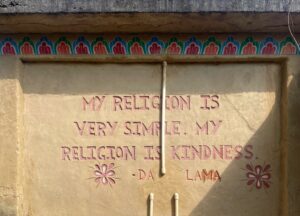
* I have always been fascinated with the way different stories and perspectives take one to a different world altogether. It is incredible to realise that there are as many stories as there are people! As someone trained in sociology, I tend to find layers and intersections to dissect in almost everything I come across. Widening my own horizons and sharing whatever little I learnt has always been pleasurable to me. This story is an attempt to share the essence of the place to the readers through my first hand experience.
Learn more about Gatsal: https://linktr.ee/jhamtsegatsal

